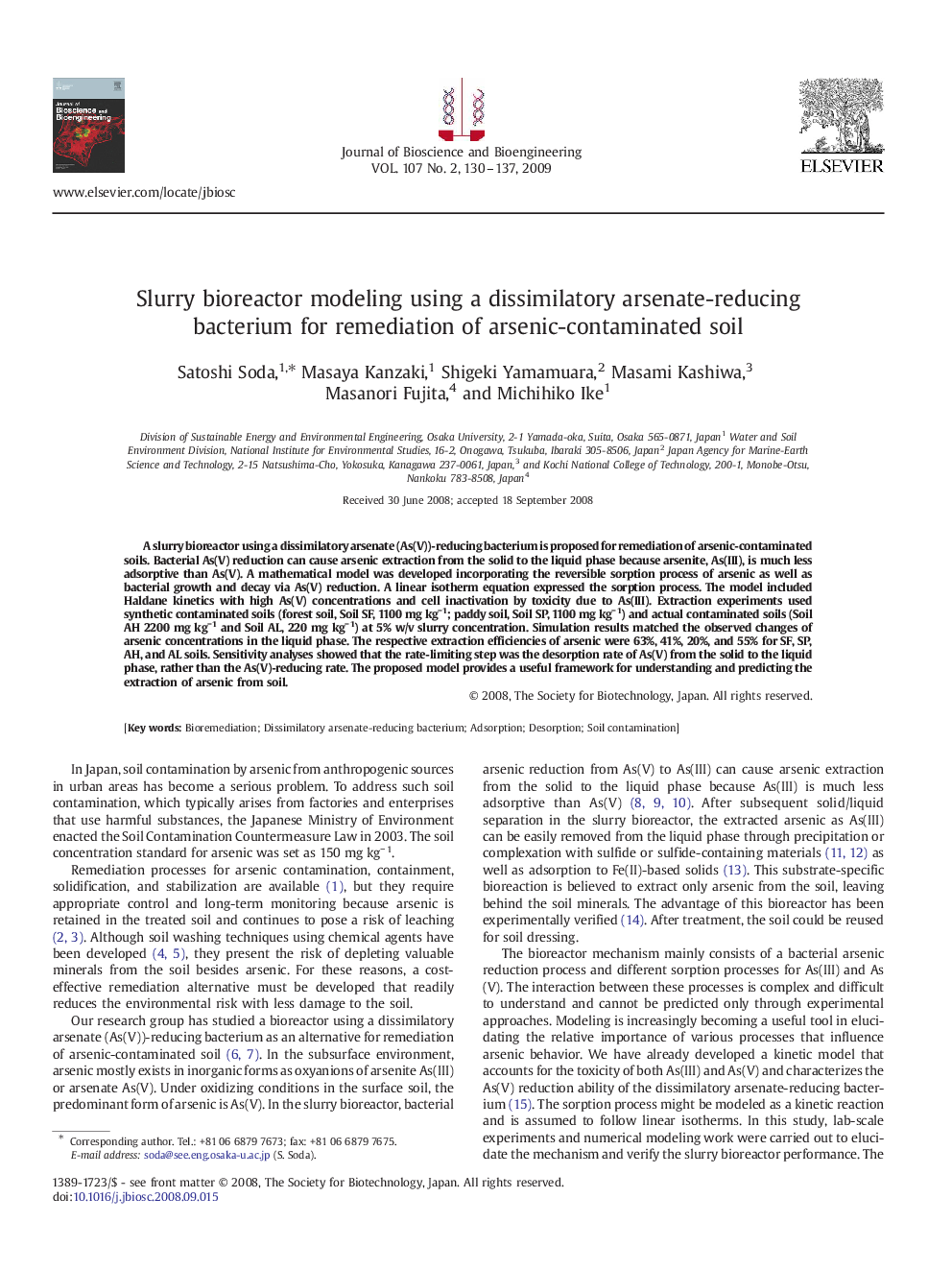| Article ID | Journal | Published Year | Pages | File Type |
|---|---|---|---|---|
| 21419 | Journal of Bioscience and Bioengineering | 2009 | 8 Pages |
A slurry bioreactor using a dissimilatory arsenate (As(V))-reducing bacterium is proposed for remediation of arsenic-contaminated soils. Bacterial As(V) reduction can cause arsenic extraction from the solid to the liquid phase because arsenite, As(III), is much less adsorptive than As(V). A mathematical model was developed incorporating the reversible sorption process of arsenic as well as bacterial growth and decay via As(V) reduction. A linear isotherm equation expressed the sorption process. The model included Haldane kinetics with high As(V) concentrations and cell inactivation by toxicity due to As(III). Extraction experiments used synthetic contaminated soils (forest soil, Soil SF, 1100 mg kg− 1; paddy soil, Soil SP, 1100 mg kg− 1) and actual contaminated soils (Soil AH 2200 mg kg− 1 and Soil AL, 220 mg kg− 1) at 5% w/v slurry concentration. Simulation results matched the observed changes of arsenic concentrations in the liquid phase. The respective extraction efficiencies of arsenic were 63%, 41%, 20%, and 55% for SF, SP, AH, and AL soils. Sensitivity analyses showed that the rate-limiting step was the desorption rate of As(V) from the solid to the liquid phase, rather than the As(V)-reducing rate. The proposed model provides a useful framework for understanding and predicting the extraction of arsenic from soil.
